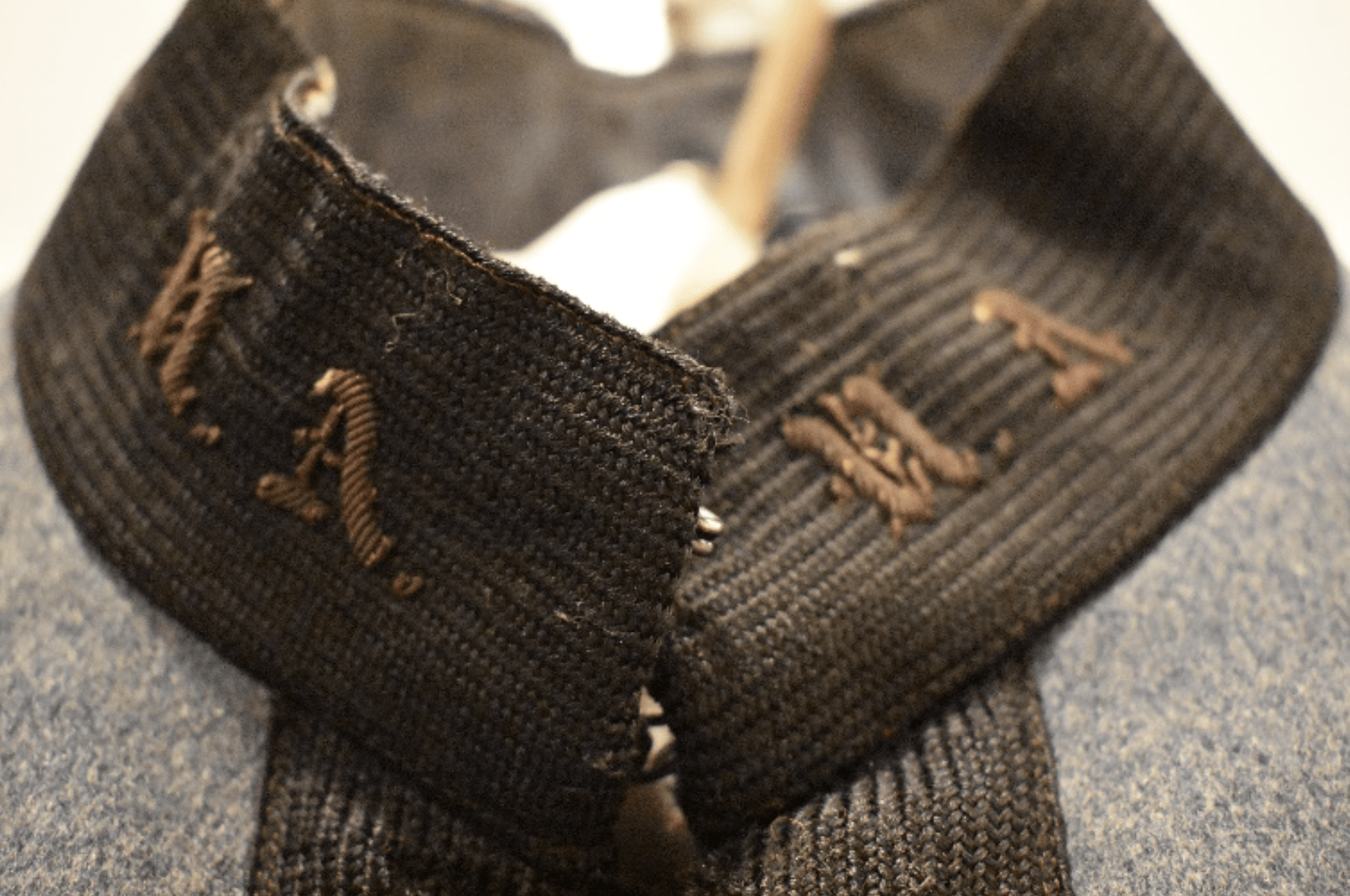
A photo of the last University of Arkansas chapter of the Corps of Cadets. In the National Defense Act of 1916, the Corps of Cadets became the Reserve Officer’s Training Corps (ROTC). Photo courtesy of the Razorback Yearbook Digital Collections, University of Arkansas.
Author Bio: Jazlyn Sanderson is a current honors senior, completing her B.A. in December 2020 with a major in Art History and a minor in History. Her study interests lie in pre-Columbian art and craftwork. Currently, she is working as an intern with the Museum of Native American History in Bentonville, AR.
Regular life came to a gripping halt for students as they entered wartime activities of raising money, rationing, and ultimately saying goodbye to loved ones as the United States entered World War I on April 6, 1917. Many men left their college life behind and fought for their country while many women spent their time towards war efforts, either through promotion at home or lending a hand at the Red Cross. Whether at home or across the sea, college students offered their time, money, and knowledge to the war effort. The University Weekly newspaper continuously offered articles and advertisements about investments, rationing, and how students could contribute to the war effort. The University as whole also contributed to the war effort. The May 2, 1918, edition of the University Weekly newspaper reported that The University was among the leading state universities in food conservation and bond campaigns.

A detail photograph of the Corps of Cadets uniform once belonging to Ernest Paul O’Neal, a University of Arkansas Alumni and WWI veteran. Photo courtesy of the University of Arkansas Museum Collections.
While many men missed their college days, recent college graduates also had to sacrifice their official start in the working world for the war. Ernest Paul O’Neal, of Hope, Arkansas, enlisted on June 1, 1918, and graduated from the University of Arkansas with class honors with a Bachelor of Electrical Engineering just 11 days later on June 11. His senior year, he was the president of the Arkansas branch of the American Institute of Electrical Engineering, a first tenor in Glee Club, and a part of Gray Hall’s Men’s Governing Board. Of the graduates found in the commencement handout, thirteen students were excused upon entering the military or naval service. At this time, O’Neal was still on campus. He began his enlistment as an inactive infantry unassigned, working as an instructor in automobile starting, lighting, and ignition systems at the University of Arkansas War Training School. By September, O’Neal actively wanted advancement and sent a letter to the Adjunct General, outlining his interest in active duty in aviation. The uniform pictured above belonged to O’Neal when he was a part of Company’ B’ in the Corps of Cadets in 1915-1916. The Corps of Cadets, better known as the Reserve Officer’s Training Corps (ROTC) today, offered military training and instruction to students on college campuses across the nation. While the uniform existed before the Great War, it details O’Neal’s commitment to the country and his training while on the University of Arkansas’ campus. Later, after the war, he was sure to turn his experience to good use when he came across “army entertainments” in New York. He wrote home to his mother, asking to send his official army uniform to him so he could have some fun.
World War I interrupted general daily life at the University of Arkansas. People found ways to connect with the community in order to cope. Finding accord at home gave a sense of peace amidst the horrors happening on the front lines. The University Weekly newspaper even discussed a community in Minnesota singing “America” every evening at 7:30 to express unity. This act of togetherness and community reflects onto our contemporary lives during the COVID-19 pandemic. Reflecting on the situation over the last few months can be mentally draining. Like most of us, it was difficult for me to switch to isolation so suddenly. The internet became an essential tool in togetherness. While it feels like we live in a divisive world, there are continuous stories of kindness and collectivity among us. I think back to the end of the spring semester when John Krasinski hosted “SomeGoodNews” on YouTube, where he highlighted some of the most heartwarming stories of unity. While he has not brought the show back, it became a vital breather for me during these hard times. Though just like WWI, students’ lives have come to a screeching halt in many aspects, many people continue to work towards a common good. In 1917 people were called to work across the world. In 2020, we are encouraged to work from our couches.
Sources:
Due to the predominance of women on campus during wartime, the University Weekly newspaper would often target women by offering new recipes for corn meal or a list of available jobs specifically “for women.” While this is just one reference University Weekly Newspaper, many during the war had articles titled “…For Women,” or would encourage collegiate women on the University of Arkansas Campus to lend an effort to the war by including an article on how women on other campuses were giving time and assistance. University Weekly, May 9, 1918. https://digitalcollections.uark.edu/digital/collection/Traveler/id/235/rec/78
They also offered many war specific courses, such as food conservation, war lectures, and engineering trades. The campus even hosted technical training for three hundred drafted men for two months in the summer of 1918. University Weekly, May 2, 1918. https://digitalcollections.uark.edu/digital/collection/Traveler/id/209/rec/98
Charlie Alison, “Throwback Thursday,” University of Arkansas News, February 23, 2017. https://news.uark.edu/articles/37915/throwback-thursday
“” COMMUNITY SINGS” AND PATRIOTISM,” University Weekly, May 9, 1918. https://digitalcollections.uark.edu/digital/collection/Traveler/id/235/rec/78
John Krasinski, “SomeGoodNews,” 2020. https://www.youtube.com/channel/UCOe_y6KKvS3PdIfb9q9pGug
